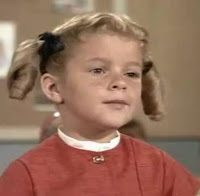 |
| Sylvester Stallone in the original Rocky. |
The
Rocky saga continues on November 25th with the release of
Creed. This latest installment in Sylvester Stallone's long-running series about a blue-collar boxer is a reboot. This time, Rocky Balboa takes a backseat in a story that focuses on Apollo Creed's son Adonis.
Creed is the first film in the series since
Rocky Balboa in 2006. That year, I watched all six of the
Rocky pics and was struck by the enduring popularity of the character. The credit belongs to Sylvester Stallone, whose talents as a filmmaker and actor have certainly been questioned. For every good movie he’s made (e.g.,
Cliffhanger), there are two or three humdrum ones (e.g.,
The Specialist,
Judge Dredd, and
Oscar). Heck, maybe the good-to-bad ratio is even higher. But Stallone’s poor career choices don’t negate the fact that the original
Rocky is a remarkably entertaining and—yes—even inspirational tale of an underdog that beats all odds.
The deceptively simple plot has Apollo Creed (Carl Weathers), a flamboyant heavyweight boxing champion whose popularity is waning, generating publicity by giving an unknown fighter a shot at the title. Stallone, who wrote a draft of the
Rocky script in three days, derived his premise from the real-life boxing bout between heavyweight champion Muhammad Ali and unknown challenger Chuck Wepner. Expected to suffer a quick defeat, Wepner went 15 rounds with Ali before losing in a technical knockout.
 |
Adrian looked more glamorous in
later Rocky films. |
In Stallone’s script, the champ Creed picks Rocky Balboa, a local Philadelphia fighter nicknamed The Italian Stallion. A has-been with a mediocre won-loss record, Rocky makes ends meet by collecting money for a loan shark. But from the moment that he accepts the challenge, Rocky’s life—and the lives of those around him—begins to change. He finds love with Adrian (Talia Shire, a wonderfully nuanced performance), the shy girl who works at the neighborhood pet store. He convinces Mickey (Burgess Meredith), the grizzled owner of a second-rate gym, that maybe they can both make something of their lives. He lifts the spirits of an entire neighborhood, as they watch him running through the streets daily as he trains for the big fight.

Rocky’s transition from “nobody” (how he defined himself) to “somebody” becomes complete at the climax of the now-famous training montage. It starts with an out-of-breath Rocky struggling to run up the steps to the Philadelphia Museum of Art. But by the time it’s complete, a jubilant Rocky races up the steps to the strains of Bill Conti’s “Gonna Fly Now” and, upon reaching the top, raises his arms in triumph. It’s certainly one of the most indelible images in 1970s cinema.
Still, despite the film’s strong performances (Stallone, Shire, Meredith, and Burt Young all received Oscar nominations),
Rocky was considered a long shot for the Academy Award in 1976. Amazingly, despite stiff competition from the likes of
Taxi Driver and
Network,
Rocky beat the odds and stunned everyone with its Oscar win—thus cementing its place in film history.
 |
| Meredith has one of the best scenes. |
The rest of the story is a familiar one:
Rocky propelled Stallone to superstar status and inspired five direct sequels. In
Rocky II (1979), we get the Creed-Balboa rematch while Adrian gives birth to their son.
Rocky III (1982), the best of the sequels, finds Rocky becoming complacent while a new ruthless challenger (Mr. T as Clubber Lang) fights his way into contention.
Rocky IV (1985), the weakest series entry, pits Rocky against a Russian steroid-enhanced fighting machine. Rocky’s climatic speech, a ridiculous slice of glasnost, has to be heard to be believed. Still, the film was a bona fide hit whereas
Rocky V (1990) tanked at the boxoffice.
Despite many flaws, the fifth installment at least tried for something different—it ends with a brawl in the street, not the ring. That brings us to
Rocky Balboa, which was intended at the time to be the last film in the series. Perhaps, it tries too hard to tie up all the loose ends and provide a fitting bookend to the first
Rocky. And yet, this quiet film manages to capture the grittiness and heart of the original. It’s a fitting tribute to a character that endured for over three decades and brought joy to millions of movie-goers.
It will be interesting to see whether
Creed can reignite interest in Rocky Balboa and Apollo Creed. I just hope that Stallone doesn't regret not ending his film series on a high note--as he did with
Rocky Balboa.
 Good news for classic TV fans! On December 1st, Timeless Media continues its DVD releases of the social dramas that aired under the umbrella TV series The Bold Ones (1968-73). The Lawyers stars Burl Ives as a crafty attorney working with two junior associates played by Joseph Campanella and James Farentino. The DVD boxed set includes two made-for-TV movies and 27 episodes that aired in a one-hour time slot. Earlier this year, Timeless Media offered boxed sets of two other Bold Ones TV series: The Senator (with Hal Holbrook) and The Protectors (starring Leslie Nielsen and Hari Rhodes).
Good news for classic TV fans! On December 1st, Timeless Media continues its DVD releases of the social dramas that aired under the umbrella TV series The Bold Ones (1968-73). The Lawyers stars Burl Ives as a crafty attorney working with two junior associates played by Joseph Campanella and James Farentino. The DVD boxed set includes two made-for-TV movies and 27 episodes that aired in a one-hour time slot. Earlier this year, Timeless Media offered boxed sets of two other Bold Ones TV series: The Senator (with Hal Holbrook) and The Protectors (starring Leslie Nielsen and Hari Rhodes).









































